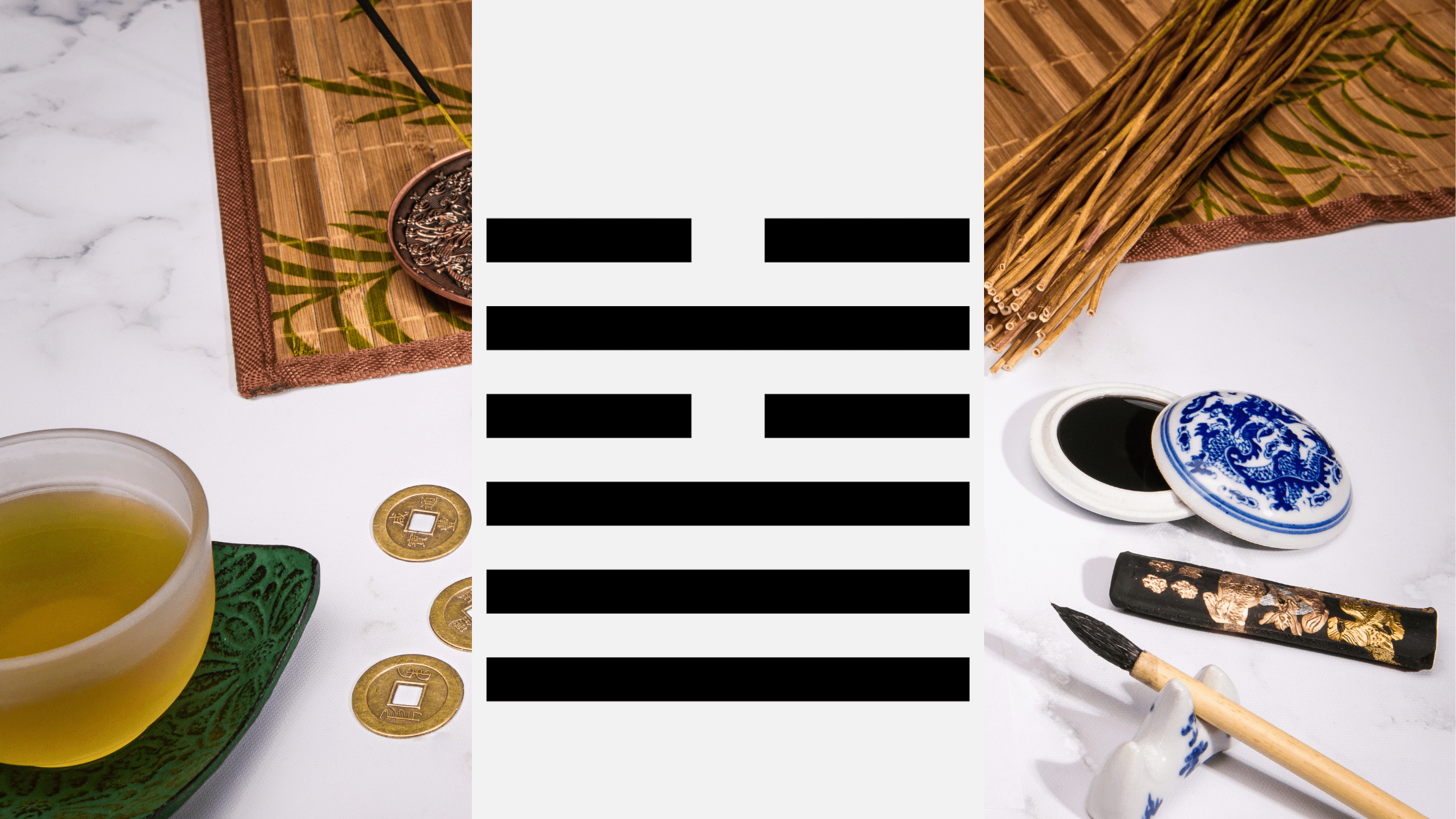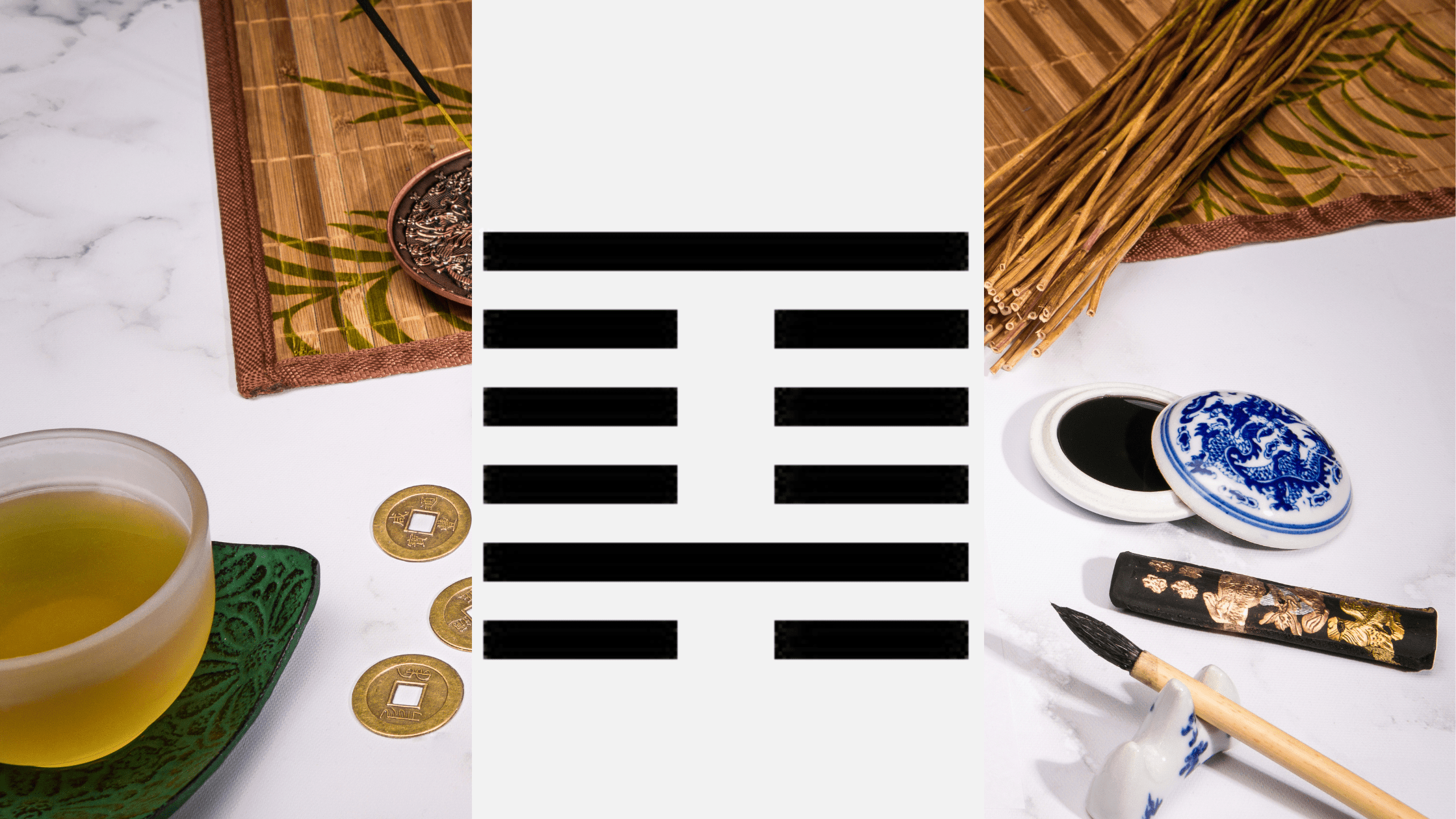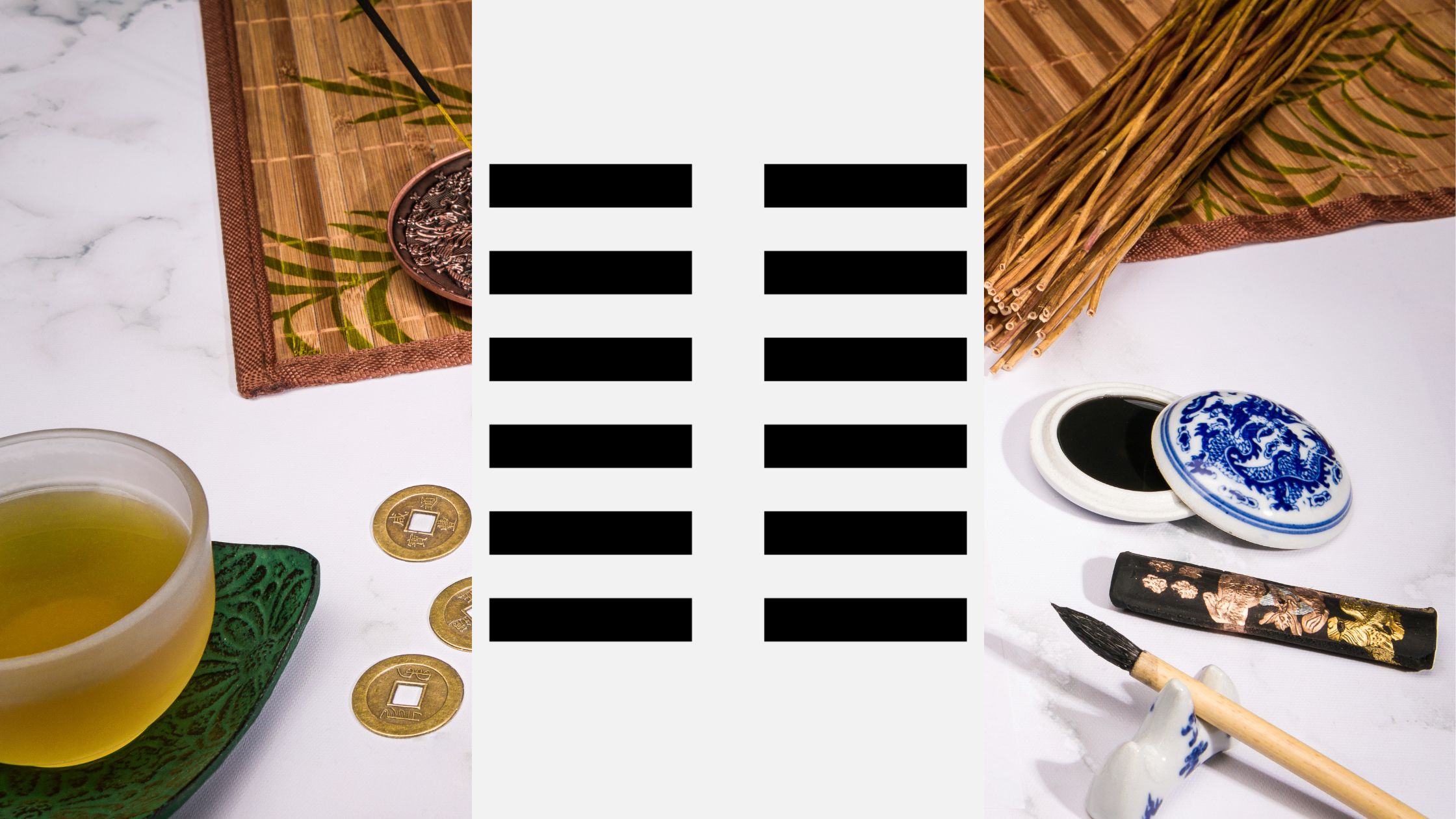The I Ching Series: A Contemplation of Ancient Chinese Text
I am an avid reader of the I Ching. The I Ching is one of the oldest Chinese classical philosophical texts. It is based on both Confucian and Taoist philosophies and was written between 1000 and 750 BCE. The I Ching was initially created as a divination text similar to Tarot that consisted of a set of linear signs to be used as “oracles” to answer complicated philosophical questions. According to the book’s introduction, the linear signs were interpreted as “symbols of changing transitional states ”and representing “certain processes in nature corresponding with their inherent character.” The basic structure of the I Ching is that it is a text of symbols, each of which is a hexagram or set of six stacked lines – either solid or broken. There are 64 possible combinations of these symbols and each one has a name, a short statement, and a statement pertaining to each of the stacked lines.
I was first introduced to the I Ching through the book by Richard Wilhelm and Cary Baynes. Their book was one of the most accessible books in English for many years. However, I was introduced to The Complete I Ching by Taoist Master Alfred Huang several years ago. Master Huang is a professor of Taoist philosophy who studied the I Ching in the 1960s. His lineage and knowledge of the I Ching is more intuitive than the work of Wilhelm and Baynes.
Master Huang approaches the I Ching from a different perspective than Wilhem and Baynes. He presents the Name and Structure of the hexagram followed by the Decision, Confucius’ commentary on the Decision and Symbol, followed by the Significance of the hexagram.
Each week I will share one of the 64 hexagrams’ Decision as well as Confucius’ Commentary on the Decision and Symbol. I will then meditate on the hexagram for the week, review the Significance of the hexagram, and write my own connection with each hexagram. I invite you to join me in contemplating this ancient Confuscian and Taoist philosophy.
This week we start from the beginning with the introduction of Hexagram 1:

Qian ● Initiating:
Decision
Initiating.
Sublime and initiative.
Prosperous and smooth.
Favorable and beneficial.
Steadfast and upright.
Commentary on the Decision
Vast indeed is the greatness of the Initiating
It is the source of all beings
And regulates all creations under Heaven.
Clouds flow and rain falls.
All beings complete their forms.
Greatly luminous, from beginning to end.
Each of the six stages completes itself in its own time,
As mounting on six dragons soaring in the sky.
The way of the Initiating is change and transformation
So that each being obtains its true nature and destiny
And the union of great harmony is preserved.
This is what is favorable and upright.
The Initiating is high above all beings.
And thus all countries are united in peace.
Commentary on the Symbol
Heaven acts with vitality and persistence.
In correspondence with this
The superior person keeps himself vital without ceasing.
Contemplation
Qian ● Initiating:
I begin this series of reflecting on the I Ching with the first hexagram: Qian or Initiating. Initiation is a beginning, a starting point, an origination, an inception, etc. As I am completing my fifth year of running Transformational Acupuncture, I am reminded of various beginnings throughout the past five years. Reopening the clinic, restaffing the clinic, revising our mission and vision, revising clinical protocols, launching a herbal pharmacy, and many more.
The words from Qian ● Initiating that resonate with me the most are:
Heaven acts with vitality and persistence.
In correspondence with this
The superior person keeps himself vital without ceasing.
Some paths require persistence and strength. This means committing to a path and to keep moving forward no matter the obstacles – to keep oneself vital without ceasing.
I have been reflecting about Transformational Acupuncture’s Mission and Vision and its business model. I have envisioned something truly ahead of its time for our medical profession – both outward facing in what patients see and inward facing in how we approach employee relations. This vision has been driven by a desire to create a heart centered sanctuary for our patients and employees as well as my personal values.
There have been many times in the past five years where I felt discouraged, disappointed, frustrated, disillusioned, and flat out ready to give up. I persevered. I found a path forward or I charted a new course. I always relied upon our Mission and Vision to guide me through the storm – even when I didn’t always know I was relying on them. The point I am making is that I stayed true to my vision of what I wanted to create and am actively creating.
Recently, my pastor and mentor Katrina Messenger reminded me that I should not compromise my vision for the clinic I have built. A vision can grow, evolve, change, and adapt as new information becomes available, but it should not compromise its essence – the rationale for why it was created, developed, or built in a specific way. And I was considering making foundational changes – in other words, ceasing my vision to address the concerns of outside influence.
The bottom line . . .
My mission and vision work. The essence of my dream and my vision work. My commitment to my dream and my vision give them power.
The testament to my vision is in our successful herbal pharmacy, our busy and successful acupuncture clinic, our new satellite clinic in the World Bank Group/IFC Wellness Center, and the number of other opportunities that Transformational Acupuncture is working to expand access to our goods and services.
For a moment, I doubted my mission and vision.
The superior person stays true to their vision without ceasing. There is life in this statement.
Where have you initiated something? What have you done to stay true to your vision? What commitment have you made to yourself in the midst of challenges? Have you ever doubted your vision?





